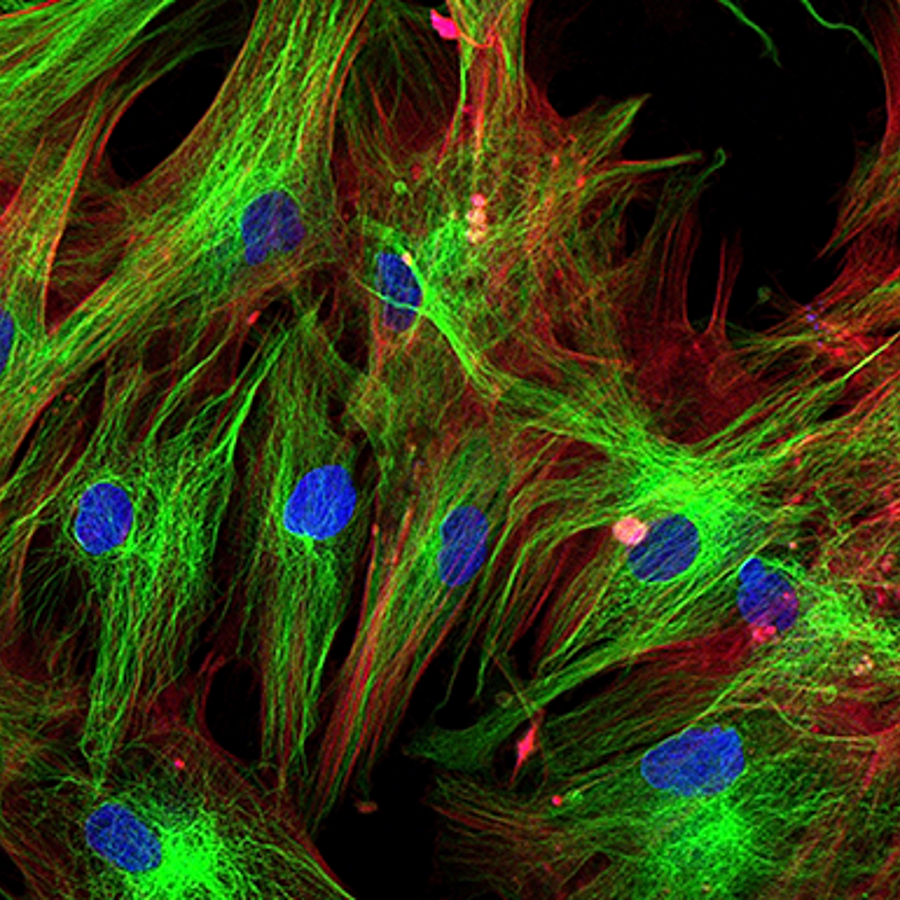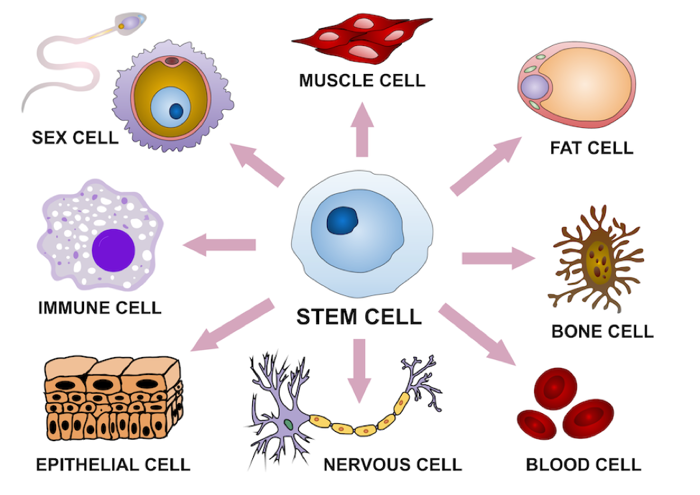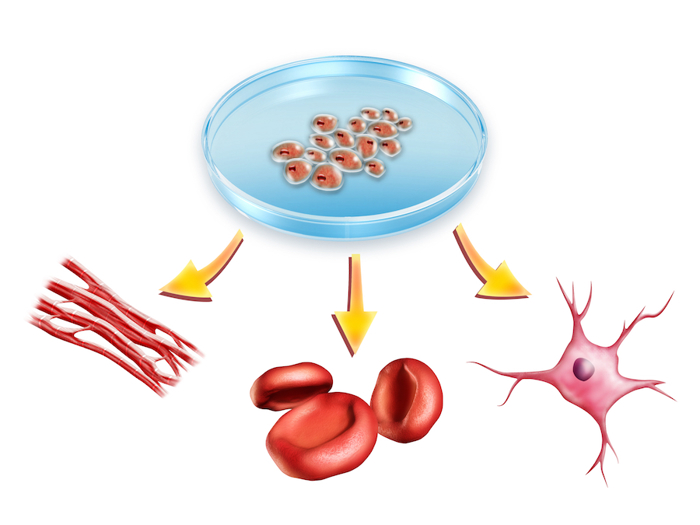
How do you identify types of stem cells and turn them into other cell types?
December 6, 2005

- Related Topics:
- Developmental biology,
- Stem cells,
- Molecular biology
An elementary school student from California asks:
"How do you figure out the types of stem cells and how do you make them into different body cells?"
What a great question! As you may know, stem cells hold the promise of curing diabetes, repairing severed spinal cords, and even healing broken hearts. (Well, hearts that have suffered a heart attack, that is, not hearts broken by unrequited love).
Let's quickly go over what a stem cell is before tackling your question. A stem is a cell whose job is basically to make lots more cells.
Most cells are stuck being what they are and can't divide to make new cells. A red blood cell cannot turn into a heart cell. But a stem cell is different. A stem cell can become lots of different kinds of cells.

Why is this exciting? Because many diseases are caused by damaged cells. If we can replace these bad cells with new ones made from stem cells, we can cure the disease.
To do this, we need to coax the stem cells into becoming the right kind of cell for the disease we want to treat.
In your body, cells rely on signals to figure out what they should be doing. These signals are usually some kind of molecule that is sent to them by another cell. So if you want to make a stem cell into some kind of body cell, you need to give it the right signal.
Sometimes cells will get the right signals if you just put them in the right place. For example, when you put stem cells into the heart of someone who has had a heart attack, they will make more heart muscle. They get all of the signals they need to turn into heart muscle from the other cells in the heart.
But this doesn't always work, so scientists are also trying to figure out how to give stem cells the right signals outside of the body.
For example, scientists have figured out how to turn stem cells into pancreatic beta cells in a Petri dish. When these cells don't work right, it causes diabetes. Someday we may be able to treat diabetes with beta cells made from stem cells.
Determining Cell Identity
But now on to the other part of your question. How do you know what kind of cell you have? For example, if you try making beta cells in a dish, how will you know if it worked?
For many cells, you can't just look at them because different types can look pretty similar. But each different kind of cell does look subtly different from the outside.
All the cells in your body make things called proteins. These proteins are like little machines that help the cells do their jobs. Different types of cells make different proteins depending on what job they need to do. For example, muscle cells make proteins that allow your muscles to move. Red blood cells make a protein for carrying oxygen around your body. Scientists can use these proteins as clues to figure out what kind of cell they have in their petri dish.

Unfortunately, these proteins are too tiny even to see under a microscope. So scientists had to come up with a different way to be able to see them. They use antibodies.
You may have heard of an antibody before. An antibody is something that helps your body find an infection and destroy it. The way an antibody works is that it only sticks to certain proteins.
The antibodies in our bodies stick to proteins found in things like bacteria and viruses that can make us sick, but not to our own proteins. What scientists do is make antibodies that stick to the proteins found in stem cells. They use these antibodies like flags to mark what proteins a cell is making. To make the antibodies easy to see, they attach a dye that can be seen under a microscope.

So let's say you want to know if you have successfully made pancreatic beta cells. You know that beta cells make a certain special protein that isn't found in any other cells. So to figure out if your cell is the right kind, you just need to add the antibody that sticks to this special protein. Then you can look under a microscope to see if it sticks to your cells.
So as you can tell, scientists have figured out a lot about working with stem cells. But we don't know it all yet! Scientists are just starting to figure out how to use stem cells to fix damaged body cells. Someday these cells may be used to treat Diabetes, Parkinson's, spinal cord injuries, and many other diseases.
Read More:
- Genome News Network: A real life application of stem cell therapy
- Science Daily: Work being done to treat diabetes using stem cells
- HudsonAlpha Institute: An overview of what stems cells are and what they can do

Author: Sarah Pierce
When this answer was published in 2005, Sarah was a Ph.D. candidate in the Department of Genetics, studying yeast functional genomics in Ron Davis’ laboratory. Sarah wrote this answer while participating in the Stanford at The Tech program.
 Skip Navigation
Skip Navigation
